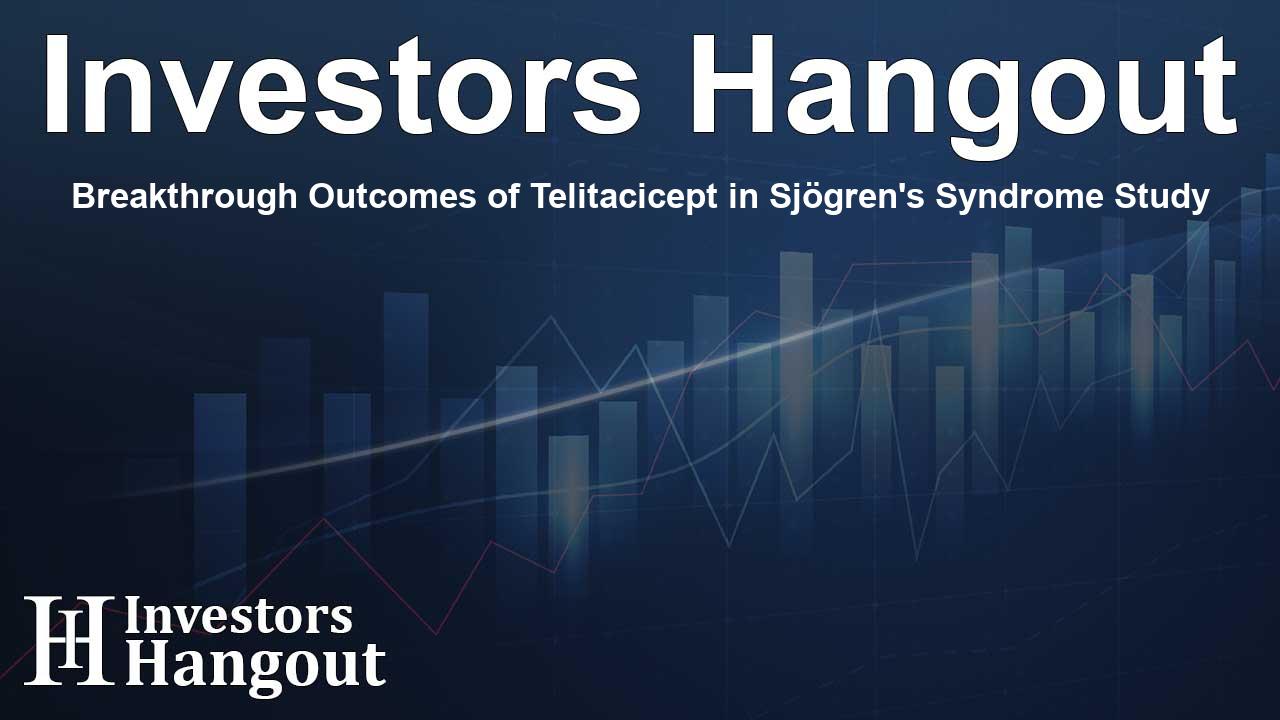Breakthrough Outcomes of Telitacicept in Sjögren's Syndrome Study

Exciting Developments in Telitacicept Phase III Trial Results
The Phase III clinical trial results for Telitacicept are sparking significant interest, particularly within the realm of Sjögren's Syndrome. This autoimmune condition can severely affect patients' quality of life due to symptoms like dry mouth and dry eyes, among others. Recently, announcements surrounding the trial outcomes indicate that Telitacicept has produced statistically significant and clinically meaningful improvements in patients compared to placebo, suggesting a positive step forward for treatment options.
Statistical Results of the Clinical Study
The promising data from the Phase III trials demonstrated that Telitacicept achieved its primary endpoint effectively. Notably, approximately 71.8% of patients receiving the 160mg dosage saw an ESSDAI reduction of at least 3 points at the 24-week mark. This statistic stands in stark contrast to only 19.3% of those in the placebo group achieving similar results. Furthermore, the efficacy of Telitacicept appears to be sustained over 48 weeks, maintaining a favorable safety profile throughout the duration.
Methodology and Patient Group
This comprehensive study enrolled 381 patients diagnosed with active, anti-SSA-positive primary Sjögren's Syndrome. The randomized, double-blind, placebo-controlled format ensured reliable results, with participants receiving either weekly doses of Telitacicept at 160mg or 80mg, or a placebo. The study design allowed for individuals in the placebo group who didn’t respond adequately to switch to the active treatment after 24 weeks, enhancing the study's versatility.
Clear Indicators of Improvement
In examining the changes over 48 weeks, the results paint a compelling picture for Telitacicept's effectiveness:
- At week 24, the mean change in ESSDAI was notable, with Telitacicept groups showing -4.4 (160mg) and -3.0 (80mg), whereas the placebo showed only a -0.6.
- These figures further improved at week 48, affirming the durability of Telitacicept’s dose-dependent outcomes.
- In terms of patient-reported outcomes (ESSPRI), significant improvements were also observed at both time points, demonstrating beneficial effects on dryness, fatigue, and pain.
The findings reflect that 71.8% of patients on the 160mg dose experienced a notable ESSDAI improvement at week 24, with that figure growing to 73.0% by week 48. When looking at patients achieving low disease activity (ESSDAI <5), results were encouraging, indicating a strong response to treatment.
Safety profile of Telitacicept
Safety considerations remain paramount in any clinical development. Telitacicept demonstrated a promising safety profile consistent with earlier studies across various autoimmune conditions, ranging from systemic lupus erythematosus to rheumatoid arthritis. Adverse events reported were generally mild to moderate, with no new safety signals emerging. This aspect provides reassurance to stakeholders regarding the therapy's risk-benefit ratio.
Addressing Unmet Medical Needs
The relentless nature of Sjögren's Syndrome leaves many patients with few options beyond managing symptoms. With limited existing treatments that modify the disease pathology, the introduction of Telitacicept exemplifies a potential turning point. This therapy not only aims to alleviate symptoms but also targets the fundamental causes of disease progression.
Conclusion: The Future of Sjögren's Syndrome Treatment
Telitacicept emerges as a pioneering treatment option that could shape the landscape for Sjögren's Syndrome management. Its global development journey, marked by a Fast Track designation from the US FDA and recent acceptance for market approval in China, underscores its potential significance. As clinical data continues to be scrutinized and further studies are conducted, hope rises for improved outcomes for those suffering from this challenging autoimmune disorder.
Frequently Asked Questions
What is Telitacicept?
Telitacicept is a recombinant dual-target fusion protein that aims to treat autoimmune conditions such as Sjögren's Syndrome by modifying disease activity.
What did the Phase III trial results show?
The Phase III trial showed significant reductions in disease activity scores among patients on Telitacicept, particularly at 160mg dosage.
How does Telitacicept compare to placebo?
Patients treated with Telitacicept, especially the higher dosage, experienced considerable improvements in symptoms compared to those receiving placebo.
What safety profile does Telitacicept exhibit?
Telitacicept maintained a favorable safety profile with primarily mild-to-moderate side effects, aligning with findings from previous studies.
What does this trial mean for Sjögren's Syndrome patients?
This trial represents a significant advancement in treatment options for Sjögren's Syndrome, addressing a long-standing unmet clinical need and offering hope for better patient outcomes.
About The Author
Contact Dominic Sanders privately here. Or send an email with ATTN: Dominic Sanders as the subject to contact@investorshangout.com.
About Investors Hangout
Investors Hangout is a leading online stock forum for financial discussion and learning, offering a wide range of free tools and resources. It draws in traders of all levels, who exchange market knowledge, investigate trading tactics, and keep an eye on industry developments in real time. Featuring financial articles, stock message boards, quotes, charts, company profiles, and live news updates. Through cooperative learning and a wealth of informational resources, it helps users from novices creating their first portfolios to experts honing their techniques. Join Investors Hangout today: https://investorshangout.com/
The content of this article is based on factual, publicly available information and does not represent legal, financial, or investment advice. Investors Hangout does not offer financial advice, and the author is not a licensed financial advisor. Consult a qualified advisor before making any financial or investment decisions based on this article. This article should not be considered advice to purchase, sell, or hold any securities or other investments. If any of the material provided here is inaccurate, please contact us for corrections.
